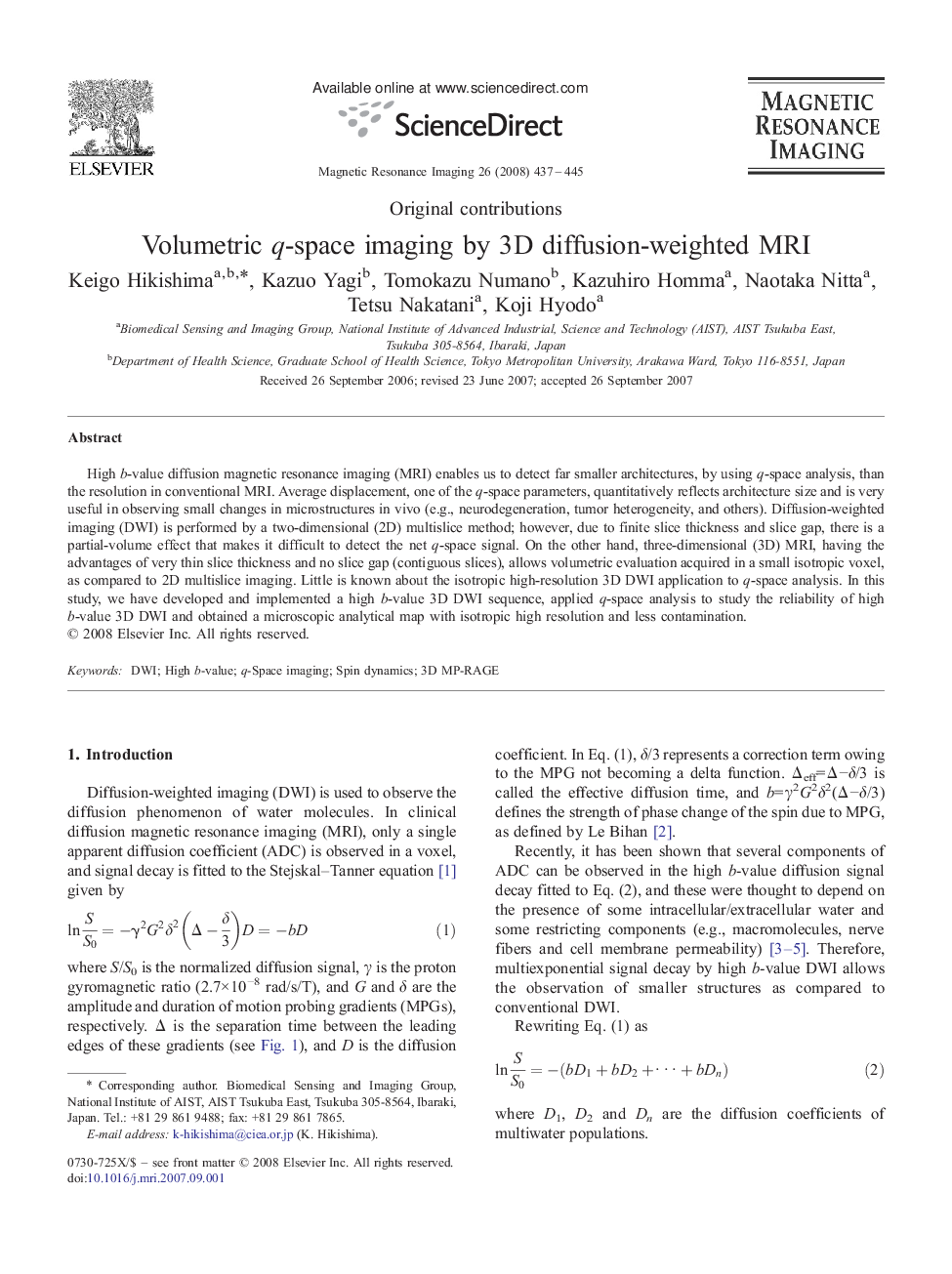| کد مقاله | کد نشریه | سال انتشار | مقاله انگلیسی | نسخه تمام متن |
|---|---|---|---|---|
| 1807330 | 1025256 | 2008 | 9 صفحه PDF | دانلود رایگان |

High b-value diffusion magnetic resonance imaging (MRI) enables us to detect far smaller architectures, by using q-space analysis, than the resolution in conventional MRI. Average displacement, one of the q-space parameters, quantitatively reflects architecture size and is very useful in observing small changes in microstructures in vivo (e.g., neurodegeneration, tumor heterogeneity, and others). Diffusion-weighted imaging (DWI) is performed by a two-dimensional (2D) multislice method; however, due to finite slice thickness and slice gap, there is a partial-volume effect that makes it difficult to detect the net q-space signal. On the other hand, three-dimensional (3D) MRI, having the advantages of very thin slice thickness and no slice gap (contiguous slices), allows volumetric evaluation acquired in a small isotropic voxel, as compared to 2D multislice imaging. Little is known about the isotropic high-resolution 3D DWI application to q-space analysis. In this study, we have developed and implemented a high b-value 3D DWI sequence, applied q-space analysis to study the reliability of high b-value 3D DWI and obtained a microscopic analytical map with isotropic high resolution and less contamination.
Journal: Magnetic Resonance Imaging - Volume 26, Issue 4, May 2008, Pages 437–445